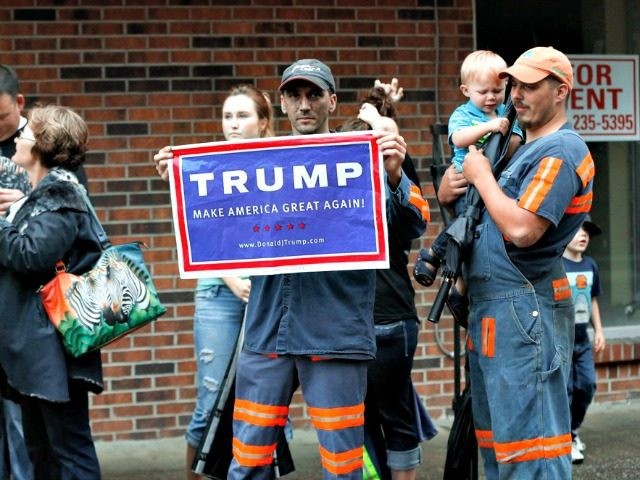Donald Trump praised America’s coal workers throughout the recent presidential campaign. And he vowed to get the coal industry back on its feet.
Under the incoming Trump Administration, it’s realistic to believe that relief could be on the way for decimated coal communities.
You wouldn’t know this from the mainstream media, however. Too often, pundits belittle the impact that Obama administration regulations have had on coal. We’re told that it isn’t federal rules stifling coal production; instead, it’s only market competition that has been responsible for coal’s decline.
This is the administration’s line, and it is nonsense.
Coal production rose steadily from 1980 until 2009. Production in 1980 was 830 million tons and in 2008 it was 1.2 billion tons. Coal employment climbed from 2000 through 2011, reaching a level not seen since 1994. Before the Obama Administration took action, coal’s share of the nation’s power generation market hit 51 percent—higher by far than competing fuels. Coal also broke records for exports and drove increasing high-wage employment, supporting hundreds of thousands of jobs paying an average of $84,000 per year with great benefits.
But beginning with a “MATS rule” in 2011, coal lost half of its entire power generating fleet—sparking a gradual decline in market share that soon accelerated, thanks to a regulatory barrage capped by the Clean Power Plan (CPP).
In fact, the Energy Information Administration (EIA) estimates that the CPP proposed by President Obama could shut down another 56 coal plants nationwide. Without this one rule, EIA says coal output would stabilize, not vanish.
A recent study from the King University business school confirmed this view, showing that natural gas had only a modest effect on coal production and that EPA regulations destroyed five times as much coal demand. And, a Duke University study concluded that less than 10 percent of America’s coal fleet was threatened by natural gas before EPA’s regulations kicked in.
Overall, EPA climate regulations under President Obama contributed to the loss of 68,000 jobs in coal communities. The result has been so severe that the President eventually proposed a $3 billion aid package to repair the damage.
In short, coal’s distress has not primarily been the result of market competition. The MATS rule, the Clean Power Plan, renewable fuel standards, New Source Performance Standards, the retroactive vetoes of mining permits, hefty federal subsidies for competing fuels—none of these was the result of “market conditions.” They were government decisions.
Lifting this regulatory burden from coal fields can also lift the industry up, sparing thousands of jobs throughout the supply chain and even bringing back some jobs lost over the past few years.
There are other valid reasons for President-elect Trump to support coal. Electricity generation anchored by coal currently saves U.S. consumers roughly $90 billion annually, says IHS Energy Consulting, thanks to a more diverse and affordable energy supply.
A robust coal industry will become a cleaner industry, too. Already, advanced technologies have made coal emissions 90 percent cleaner than 30 years ago. And thanks to pilot programs in Mississippi, Texas, and Saskatchewan, this same scientific prowess is also beginning to allow for the capture of coal’s carbon dioxide emissions. The development of even smarter coal technologies could help to establish America as a global leader while also benefiting a developing world already banking heavily on coal.
It’s clear that America will need abundant power generation in the years to come. And since the United States possesses the world’s largest reserves of coal, it makes sense for the Trump Administration to incorporate coal as part of a diverse energy mix that also includes natural gas, renewables, and nuclear power.
Instead of directing his regulators to keep coal in the ground and its employees in the jobless lines, a Trump administration can encourage the nation’s engineers to make coal cleaner and keep coal miners employed.
Luke Popovich is Vice President for External Communications at the National Mining Association (NMA).

COMMENTS
Please let us know if you're having issues with commenting.